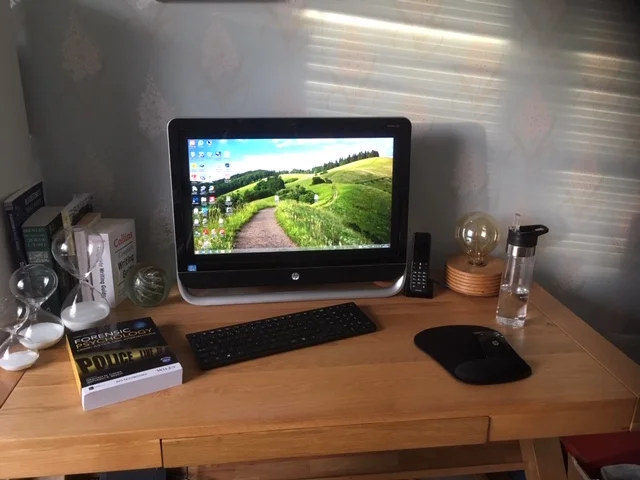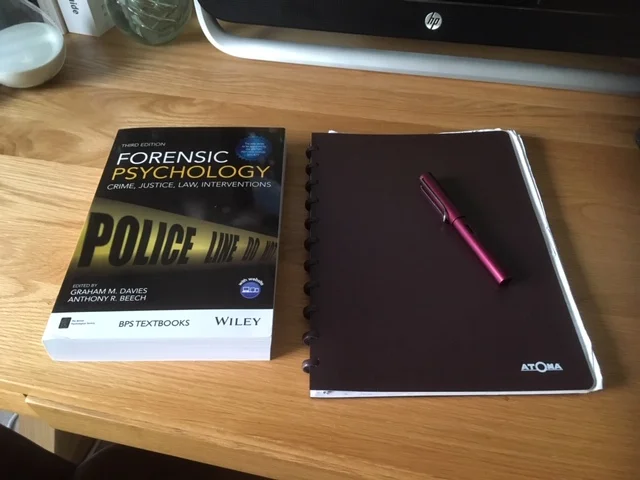I have undertaken many creative writing courses, the most important one of which was probably the MA in Creative Writing at Bath Spa University. I was asked to describe what I learnt during that time so, rather than write about the more technical elements of the programme, I thought I’d talk about the experience being on the programme itself.
Corsham Court, Wiltshire, home of Bath Spa’s MA Creative Writing
Number 1 – You’re never too old to learn to write, nor too young. You might just find you have a natural talent. I was encouraged to apply by a very good friend, who was undertaking an MA herself at Bath Spa. At the time of my application to Bath Spa University there was around a hundred and thirty-three applicants and only thirty-five places – I was determined to get one of them. At the open day, I was surrounded by younger people. It would have been easy to be intimidated. But, I’m not a giver-upper – I said to myself, why not me? I made sure my application was the best it could be. I was thrilled to be invited to an interview and surprised to be seated opposite Fay Weldon and Gerard Woodward, two literary novelists with great credentials. It was a challenging experience to say the least. I cannot describe how excited I was when I received the email confirming that Bath Spa University was offering me a place, one of the most prestigious creative writing courses in the UK.
Tip: If you’re currently looking into creative writing courses at university, take time out to research how to write a great personal statement. This could make or break your application! Also, you will likely be required to submit an example of your writing. In my case it was twenty pages. Polish it until it shines. I’m dyslexic, so I can check my work numerous times without spotting the mistakes (generally words missed out). Ask someone else to proofread your writing. And, if you use Microsoft Word, use the Read Aloud Speech function on the Review Toolbar. It makes spotting mistakes a little easier.
Number 2 – There is an assumption, particularly on an MA, that you have underpinning knowledge. There was a whole vocabulary of literary terms I was unfamiliar with. I often had to interrupt the tutor for clarification in order to understand what he or she was referring to. I wasn’t the only one in that position either. Fortunately, because of my studies with the Open University, I knew how to present my work. With regards to layout and formatting, that gave me a small advantage.
Tip: look up literary terms such as Register, Agency, Trope to name just three words you’ll need to understand. Make sure you understand the correct manner in which to format your work. For example, line spacing (usually double) and indentation (the first paragraph of a chapter should not be indented), no line spacing between paragraphs of the same style. These small touches can make a big difference. Also, on the MA, you will be required to submit assignments and essays. I wish I’d read up on essay writing in advance, it would have made life much easier.
Number 3 – Workshopping is integral to most creative writing courses. Having other people (tutors, students) read and critique your work can initially be worrying and stressful. The benefits you will derive far exceed the fear. Just remember the feedback is on your writing and not you as a person. Your tutors and fellow students will tell you what, in their opinion, works for them and what doesn’t. Often there will be opposing views. One person may love a piece of writing, someone else less so. It is immensely helpful if you are open to feedback and become practised in both giving and receiving it. I find it a joy to read other people’s work. You can learn from it, both in terms of the quality of writing and the writer’s individual style. For me, the workshopping process is critical. I’m dyslexic, as I mentioned earlier, and there are often errors in my work, so it is enormously helpful to have those pointed out. Even more important is feedback on description, plot and characterisation. Also, someone’s else’s eyes on a piece of writing can be invaluable, especially when working on a novel. Some people will offer detailed feedback, others may give it a once over and make a couple of comments. This can lead to dissatisfaction, especially if you’ve spent a lot of effort critiquing someone’s work and it isn’t reciprocated. But, in reality, an MA will be very demanding of your time. People have lives, some of your fellow students may juggle jobs, families and health issues. It’s easy to judge without knowing people’s circumstances. I endeavoured to tailor my style of critiquing to the individual.
Tip: Join a writing group before you start your MA. Generally, they are supportive environments that provide the discipline of submitting work and will introduce you to the critiquing process.
Number 4 – My tutors were wonderful. They were inspiring, encouraging and kind, especially Nathan Filer, Lucy English and Samantha Harvey. My manuscript tutor, Dr Colin Edwards, was all of that and also went beyond the call of duty. He understood my need for very detailed feedback and was especially attentive to errors that I was unconsciously making (words missing, the wrong spelling even though I knew exactly the right spelling). A few tutors were overly direct; you learn to get over it. As time goes by you develop the thick skin that is essential in order to cope as a writer and prepare you for the world of getting an agent and publisher.
Tip: Familiarise yourself with the tutors who may be teaching you. Read their books if you have time. No doubt, there will be a ‘Recommended Reading List’. It can cost a fortune. You probably won’t need to own every book on the list. I bought second-hand and still have those books today. Two favourites are: Writing Fiction – A Guide to the Narrative Craft by Janet Burroway (the 1992 edition) and Stephen King’s On Writing. Also, practise note-taking. It can be hard to keep up otherwise. I can count on one hand the number of handouts we were given on the MA I did. I used to take notes and then make my own.
Number 5 – We had the opportunity to meet and learn from agents, publishers and authors. I loved those sessions. Statistically speaking the chances of signing with an agent are small, and of signing a publishing contract even smaller. Listening to what they had to say was interesting, informative and motivating. My cohort and I were fortunate in that, upon graduation, our work was included in Sparks Bath Spa Anthology. This anthology was sent out to agents both in paperback and digital format, which gave us a huge advantage, or it certainly did me. So when you’re researching creative writing courses, personally I think it’s a good idea to see what they do to help students get their work out into the world of representation and publishing. If you’re interested, My Journey to Publication blog can be found here.
Tip: Do take notes. You might find yourself submitting to an agent later on that you met in the course of your studies. Sadly, book bloggers weren’t on the list. I’d encourage you do research in that regard. They have a great deal of influence with readers, they love books and the interviews they conduct with authors are often very insightful. They are the interface between the writer and their potential audience.
Finally, am I convinced having an MA in Creative Writing makes me a better writer than someone without one? No, I’ve met many wonderful authors who are naturally talented and write great books. They’ve honed their craft and worked hard to be successful. There are also many wonderful writers out there who could write a novel but don’t. For anyone like that, I would encourage you to do NaNoWriMo (National Novel Writing Month), it gave me the confidence boost that I needed. There are many routes to publishing and the MA is merely one of them. When you are reviewing the options on offer, it’s important to ascertain the level of commitment you are going to have to make both financially and work-wise. The course I did required a substantial amount of commitment. Was it worth it? Yes, it was. Good luck!
My debut novel, She Lies Hidden, was a UK Kindle Best Sellers Top 100.
How far would you go to find your missing sister?
When DI Thomasine Albright is informed that the remains of her fifteen-year-old sister, Karen, have been found, she promises her mother that she will be the one to find the person responsible. Thomasine is willing to sacrifice everything to find Karen’s killer. And when she does – he’ll pay
Grab your Kindle or paperback copy from Amazon. The audio-book is also available from Audible.
She Lies Hidden by C M Stephenson




